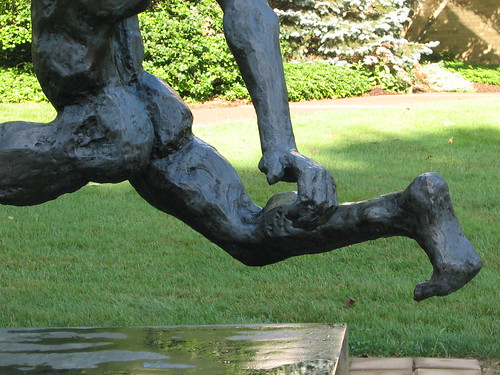 The sport activity has to be the problem. That in itself has to be related to the cause of my low back pain, even without a specific mechanism of injury. Oh, it has to be because I [insert here: am not flexible enough, have a weak core, or any number of deficits].
The sport activity has to be the problem. That in itself has to be related to the cause of my low back pain, even without a specific mechanism of injury. Oh, it has to be because I [insert here: am not flexible enough, have a weak core, or any number of deficits].
These are the words of countless active patients (and the clinicians that work with them) that suffer from low back pain. Both groups will create magical scenarios for the onset of an episode of low back pain with mechanisms that have little to no chance of actually existing. But they sure sound good, don't they?
Sometimes, itís the daily stuff that is most important. With that said, let's take a look at the Case Of The Sitting Runner.
The patient in question, Sitting Runner, was a young male runner and computer programmer, approximately 30 years old, with an acute onset of low back pain with no specific mechanism of injury. He had not had any significant changes in his run training program. Mechanical assessment and subsequent MDT classification revealed a lumbar derangement with a directional preference of lumbar extension. Sitting Runner was able to reproduce concordant symptoms with repeated lumbar flexion, and abolish these symptoms with repeated lumbar extension ("the prone press-up").
All is good, right?
But even though his responses to mechanical loading strategies were well-established, Sitting Runner was still convinced that somehow his problem must be because of running. That certainly isn't something uncommon, but as such it really didn't appear to fit the full mechanical presentation.
Let's explore the timeline of mechanical loading a little further. He would arise from bed pain-free, get in his car to drive to the trail (about 30 minutes in sustained slouch sitting), and then would start his run. He would begin his run pain-free, and he would end his run pain-free. He would never have pain during his run. He reported that he would then get back in his car, resume his sustained slouch sitting while driving, and drive another 30 minutes to work.
On arriving at work and sitting down at his computer (again, in sustained slouch sitting), he would note the onset of low back pain. He attributed these symptoms to the running that he was able to perform fully, freely, and pain-free 30 minutes earlier.
It wasn't the activity that was the problem - it was the sustained loading afterwards that was problematic.
A steady dose of repeated lumbar extension exercises, combined with the use of a lumbar roll while driving and sitting (in order to maintain his lumbar lordosis and to prevent the sustained end-range loading that he was exposed to while driving to his run and to work) was enough to seal the deal. He was able to be fully pain-free throughout the day.
But Sitting Runner continued to be concerned about the effect of running on his symptoms. With the knowledge of the mechanical behavior of his problem, I suggested that he try running some faster intervals instead of slowing his pace down as he had been doing. Why? Because this would promote greater lumbar extension during his run - his directional preference now applied to his dynamic sport activity. Lo and behold, not only was he still able to run pain-free, but he was able to work harder and feel better in the process. His confidence in running was restored, and he was now able to establish a cause-and-effect relationship between sustained mechanical loading and the onset of his low back pain.
The moral of this clinical scenario? "Day affects play" - your daytime activities, especially those that are sustained or repeated in nature - may have a significant effect on the responses to mechanical loading with sport. It's not always the sport that is the problem. Oftentimes, the sport is part of the solution - it's the day-to-day stuff that gets in the way.
Day affects play - just ask Sitting Runner.
Photo credits: lloydcrew
 "Running Injuries: Etiology And Recovery- Based Treatment" (co-author Bridget Clark, PT) appears in the third edition and fourth editions of "Clinical Orthopaedic Rehabilitation: A Team Approach" by Charles Giangarra, MD and Robert C. Manske, PT.
"Running Injuries: Etiology And Recovery- Based Treatment" (co-author Bridget Clark, PT) appears in the third edition and fourth editions of "Clinical Orthopaedic Rehabilitation: A Team Approach" by Charles Giangarra, MD and Robert C. Manske, PT.
 Allan Besselink, PT, DPT, Ph.D., Dip.MDT has a unique voice in the world of sports, education, and health care. Read more about Allan here.
Allan Besselink, PT, DPT, Ph.D., Dip.MDT has a unique voice in the world of sports, education, and health care. Read more about Allan here.
 Top 5 finalist in three categories: "Best Overall Blog", "Best PT Blog" and "Best Advocacy Blog".
Top 5 finalist in three categories: "Best Overall Blog", "Best PT Blog" and "Best Advocacy Blog".